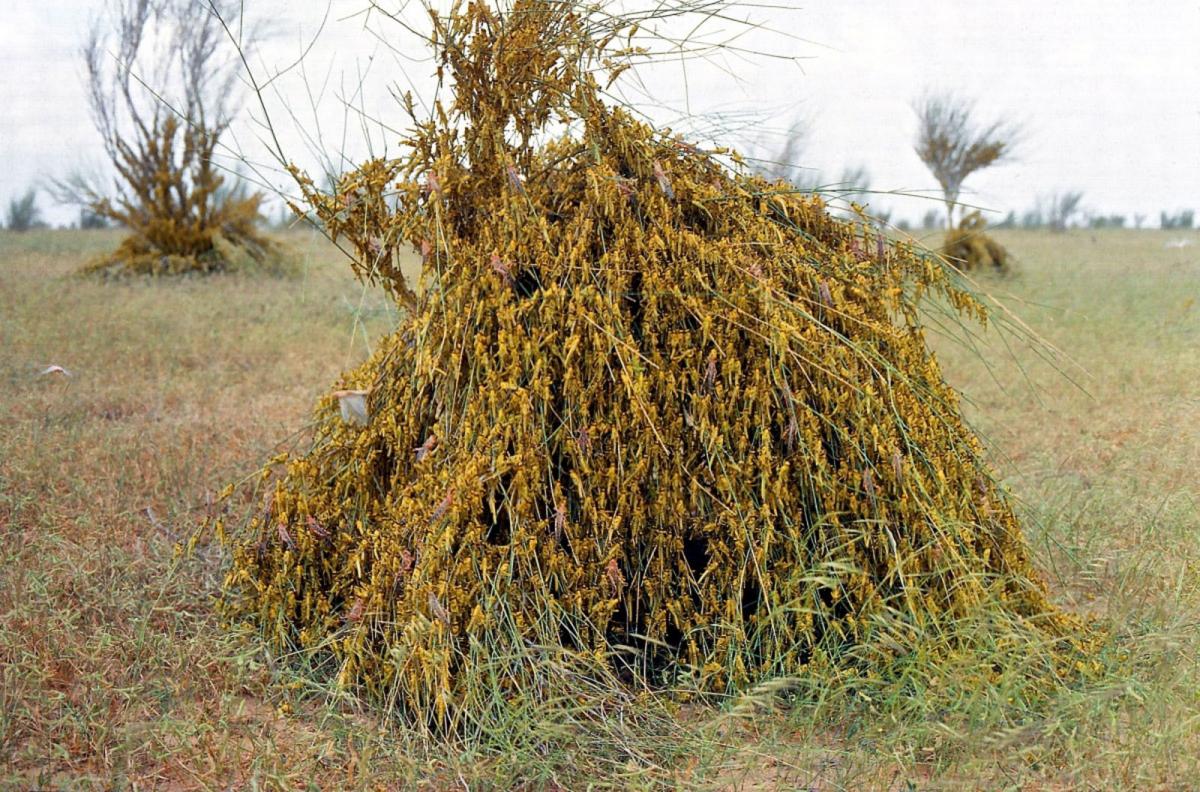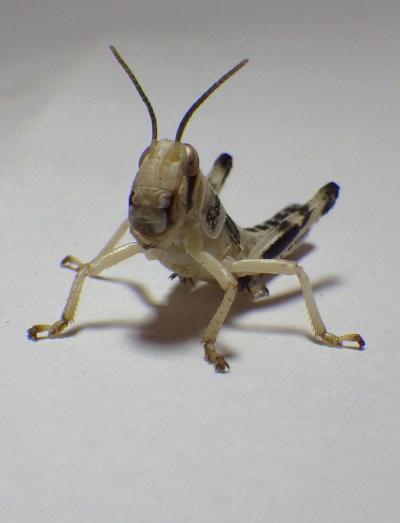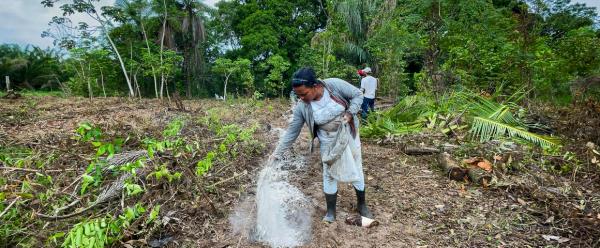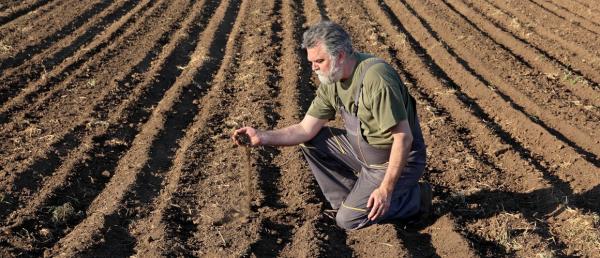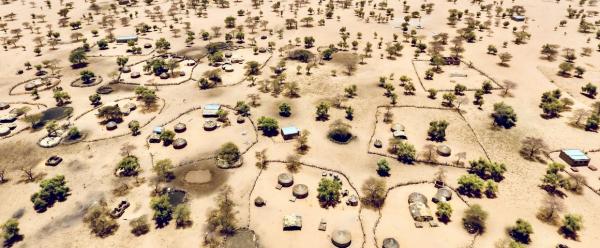Expert view 19 March 2024
- Home
- CIRAD news
- News
- Locust invasion in East Africa
Cyril Piou: "Locust invasions | Prevention is the only solution"
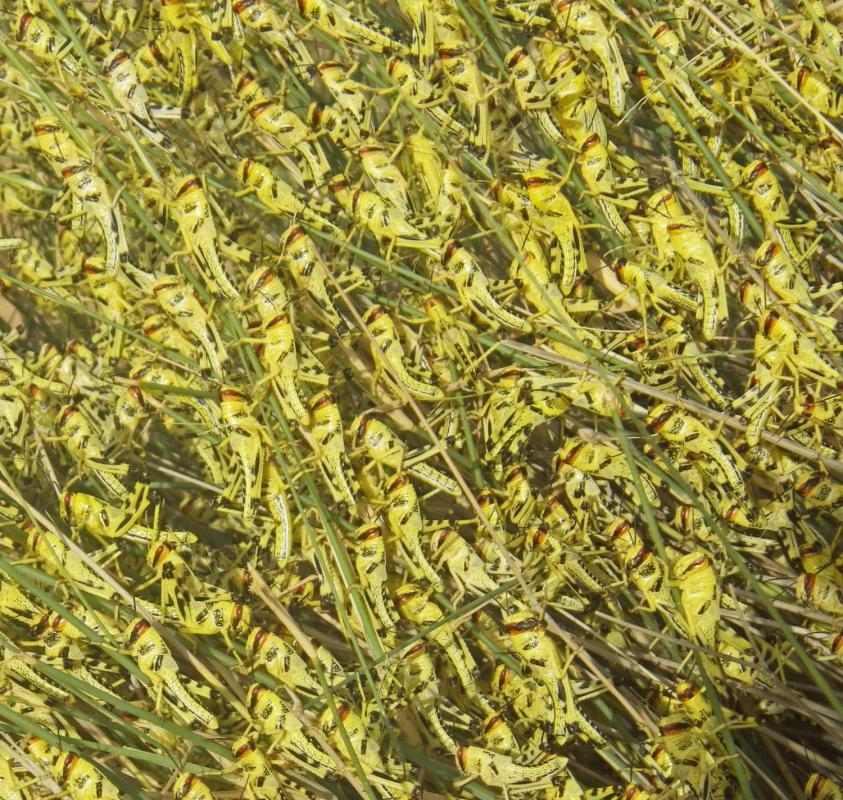
What has caused the current desert locust swarms in East Africa?
Cyril Piou: The current invasion is the result of events in 2018, after a cyclone hit the coast of Yemen. The heavy rains triggered the rapid growth of vegetation in the semi-desert zones that serve as locust habitats. This fostered their multiplication. In early 2019, locust swarms spread along each side of the Red Sea and into the Arabian Peninsula. They reproduced in June and spread exponentially through the Horn of Africa. They invaded northern Somalia, Kenya and Ethiopia, where flooding in October and November created the right conditions for their continued multiplication.
At low densities, locusts are not a problem. However, once populations reach a critical density, contacts between individuals trigger a change in behaviour. This is known as gregarization. Gregarious locusts gather, and act in unison. At the hopper stage, they form bands, and subsequently form swarms and travel large distances to find food. Such swarms devastate crops as they pass through, posing real food security problems for people in affected areas.
How do you think such invasions could be prevented?
C.P.: We have known for decades that the best way of preventing invasions is ongoing preventive control systems. This means conducting surveys beforehand to pinpoint places where locusts are reproducing and populations are gregarizing. This makes it possible to destroy the hoppers on the ground as they begin to gregarize. The earlier action is taken, the easier it is to act on a small, local scale. In Mauritania, for instance, they have been treating just a few hundred km² a year since 2007, and it's working!
If we wait until the hoppers swarm and multiply, they are much more difficult to regulate. The problem in countries like Yemen or Somalia is that they don't have an effective prevention system, notably due to the armed conflict in those countries. This was the case in East Africa in 2018-2019, and we now need to take urgent action. FAO has just launched a call for 70 million dollars of international aid. Planes and helicopters are needed for insecticide spraying operations. This is more costly and environmentally disastrous.
Why is research crucial to controlling locust outbreaks?
C.P.: Research is helping to improve preventive control. It can assist with risk forecasting, using satellite images and modelling. It also helps with analysing locust ecology. For instance, by studying group movements, analysing how they use vegetation and examining their thermoregulatory behaviour, we can determine where and when to apply insecticides to ensure greater efficacy and reduce the environmental impact.
Research also serves to keep prevention systems on their toes. We have observed that such crises are cyclical - every 10 to 15 years - for want of prevention. In particular, this happens when it has been several years since the media have talked about the topic.
In West Africa, under the aegis of the Commission for Controlling the Desert Locust in the Western Region (CLCPRO-FAO), preventive control has improved in recent years. The CLCPRO has pushed affected countries to work together more and exchange information using improved technologies, while maintaining research and training operations in which CIRAD is involved. In East Africa, on the other hand, many good past habits have been lost.
What sort of investment is required in East Africa?
C.P.: As far as preventive control goes, there are several ways it could be improved. Firstly, we need to join forces within some sort of strong organization. Preventive control in East Africa is currently run by two separate bodies: the FAO Commission for the Central Region (CRC-FAO) and the Desert Locust Control Organization for Eastern Africa (DLCO-EA). Only a few countries belong to both.
In addition, preventive surveys are sadly lacking in several countries, and not just those that are politically unstable. Training and new investment in better vehicles and tools are required.
The FAO Desert Locust Information Service (DLIS) in Rome issues forecasts for African and Asian countries affected by desert locusts. It could be backed up by local forecasting services, which need additional funding and improved tools such as the satellite equipment developed by CIRAD for the western region, and population movement models.
In view of these requirements, there are several lines of research that should be developed in East Africa. And research will be of no use unless it is co-designed with the national and regional locust control organizations that will be using the results.
What research projects are CIRAD teams currently working on?
C.P.: CIRAD is working in West and North Africa, on risk modelling [i]. It is also working with JIRCAS (Japan) on a study of thermoregulatory behaviour in locusts. Since 2017, it has also been collaborating with several partners in Latin America, on the ecology and risk forecasting of another locust, Schistocerca cancellata .
This year, a project with €2M of funding from the AFD, coordinated by the CLCPRO, is due to begin. It will also involve CIRAD, and is one example of a research project co-constructed with and for management partners. The initial aim is to identify plants likely to harbour desert locusts. To this end, researchers will be using the PlantNet app technology. We will subsequently be developing regional risk forecasting tools, to guide survey teams more effectively. A study of the past and future effects of climate change on desert locusts is also planned. Finally, we also intend to model the knowledge held by former surveyors, to improve transfers of expertise between locust control centres.
[i] Notably as part of an ANR project (ANR JCJC PEPPER).

























